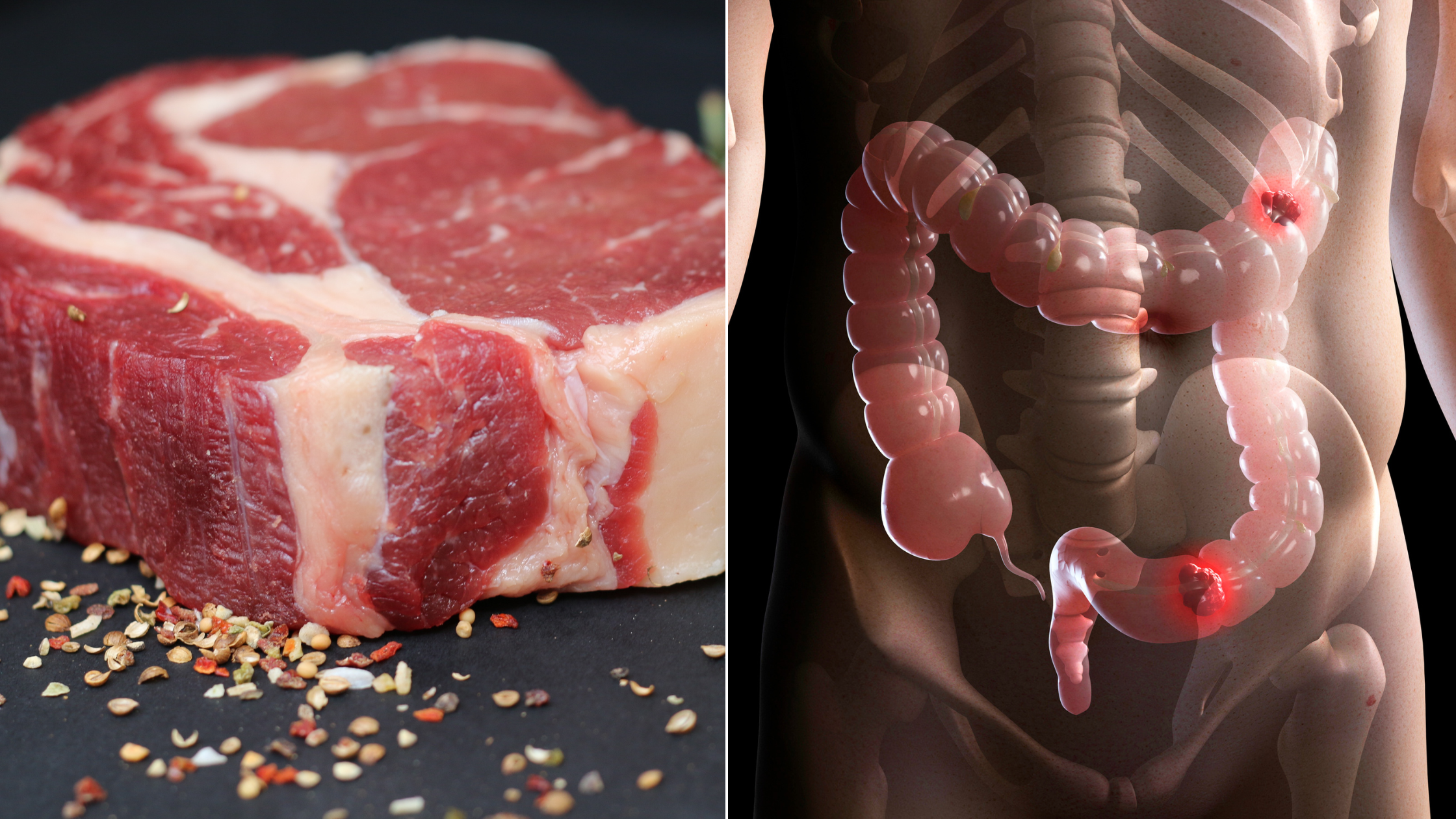
Is There a Link Between Red Meat Consumption and Cancer?
Red meat has been a staple in human diets for centuries, offering rich sources of protein, iron, and essential nutrients. Yet in recent years, it has also become a subject of concern—particularly regarding its potential link to cancer. Headlines often present this relationship as definitive, but the actual science tells a more nuanced story.
Understanding the connection between red meat and cancer risk requires careful examination of large-scale population studies, cooking methods, portion sizes, and the differences between processed and unprocessed meats. This blog aims to offer an evidence-based overview of what we know, what remains unclear, and how individuals can make informed choices that align with their personal health goals.
Instead of framing red meat as inherently harmful or completely harmless, this discussion takes a balanced approach—acknowledging the nutritional value of red meat while exploring the factors that may contribute to increased health risks when consumed in excess or prepared in specific ways.
Table of Contents
- What Is Red Meat?
- Red Meat and Cancer Risk: What the Research Says
- How Might Red Meat Influence Cancer Risk?
- How to Approach Red Meat in a Balanced Diet
- FAQs
- Conclusion
What Is Red Meat?
Red meat refers to meat from mammals that is typically red when raw. This includes beef, lamb, pork, goat, and veal. These meats are known for being high in protein, iron (particularly heme iron), zinc, and vitamin B12. These nutrients are essential for energy metabolism, muscle repair, and red blood cell formation.
Red meat is often grouped into two main categories:
- Unprocessed red meat: Fresh cuts like steak, ground beef, lamb chops, and pork tenderloin.
- Processed red meat: Meats that have been cured, smoked, salted, or preserved—such as bacon, sausages, hot dogs, ham, and deli meats.
It's important to distinguish between these categories, as they may influence health outcomes differently. Much of the concern surrounding red meat and cancer risk centers on the processed category, although both have been studied extensively in nutritional science.
Red Meat and Cancer Risk: What the Research Says
Over the past two decades, numerous studies have explored the possible relationship between red meat consumption and cancer risk—particularly colorectal cancer. Some large-scale observational studies have found associations, while others report more modest or inconsistent findings.
For instance, in 2015, the World Health Organization’s International Agency for Research on Cancer (IARC) classified processed meats as “Group 1 carcinogens,” indicating that there is sufficient evidence in humans to support a link to colorectal cancer. Red meat was classified as “Group 2A,” meaning it is considered “probably carcinogenic,” based on limited evidence in humans and stronger evidence from animal studies.
It’s important to understand that these classifications refer to the strength of the evidence—not the magnitude of risk. In many studies, increased cancer risk was observed primarily in individuals consuming high quantities of processed meat over time. For unprocessed red meat, the associations were generally weaker and more variable.
Other factors also complicate the data. Many studies rely on self-reported food intake, which can introduce error. Additionally, lifestyle variables such as smoking, alcohol use, physical activity, and fiber intake can influence cancer outcomes and may confound the relationship between red meat and disease risk.
While some evidence suggests a possible link—especially with processed meats—it’s also clear that context matters. Quantity, frequency, preparation method, and overall dietary patterns all play roles in shaping health outcomes.
How Might Red Meat Influence Cancer Risk?
Researchers have identified several potential mechanisms that could help explain why high intake of red or processed meats might be associated with increased cancer risk. These mechanisms are still under investigation and often depend on the type of meat and how it’s prepared.
Heme Iron: Red meat is rich in heme iron, a form that is more easily absorbed than plant-based iron. Some studies suggest that excess heme iron may contribute to the formation of certain compounds in the colon that can affect cell function. However, the body regulates iron levels carefully, and moderate intake is typically well-tolerated.
Cooking Methods: High-temperature cooking techniques—like grilling, pan-frying, or barbecuing—can produce compounds such as heterocyclic amines (HCAs) and polycyclic aromatic hydrocarbons (PAHs). These compounds have been shown in lab studies to affect DNA structure, although their role in human health remains under study.
Nitrates and Nitrites: Processed meats often contain added preservatives like sodium nitrite, which can form N-nitroso compounds (NOCs) during digestion. These compounds have been shown in experimental models to potentially interact with gut cells, but their impact in real-world human diets remains debated.
It’s worth noting that the body has defense systems—including enzymes and antioxidants—that help neutralize potentially harmful compounds. Diets rich in plant-based foods may also provide protective benefits that help offset occasional exposure to such substances.
How to Approach Red Meat in a Balanced Diet
Red meat can be part of a health-supportive diet when consumed mindfully and in moderation. The key is to focus on quality, variety, and overall dietary balance, rather than eliminating any one food group entirely unless advised by a healthcare professional.
Choose unprocessed options: When including red meat in meals, opt for minimally processed cuts such as grass-fed beef, lean ground lamb, or pork tenderloin. These options contain fewer additives and may be better tolerated as part of a whole-food approach.
Moderate your intake: Health authorities often recommend limiting red meat to a few servings per week—roughly 12–18 ounces. This amount may vary depending on age, activity level, and individual dietary needs.
Pair with plants: Combining red meat with a variety of vegetables, legumes, and fiber-rich foods can support digestion and nutrient absorption. These foods may also provide antioxidants and phytonutrients that help maintain internal balance.
Cook with care: Opt for gentler cooking methods like baking, slow roasting, or steaming instead of high-heat grilling or charring. Using herbs, spices, and marinades may also help reduce the formation of certain compounds during cooking.
Ultimately, the decision to include red meat in your diet should be based on your health goals, ethical considerations, and overall wellness strategy. Rather than viewing red meat as “good” or “bad,” it may be more useful to consider the bigger picture of dietary quality and diversity.
Frequently Asked Questions
Is it true that all red meat increases cancer risk?
Not necessarily. Research suggests that processed meats may have a stronger association with cancer risk than unprocessed red meats. Quantity, frequency, and preparation methods also matter. Context is key.
How often can I eat red meat safely?
Many health organizations recommend limiting red meat intake to about two to three servings per week. However, individual needs vary. A healthcare provider can help tailor guidance based on your goals.
Are there benefits to eating red meat?
Yes. Red meat is a natural source of high-quality protein, iron, zinc, and vitamin B12. These nutrients support energy metabolism, immune function, and red blood cell formation. Balance and variety are important.
What are good alternatives to red meat?
Protein-rich alternatives include fish, poultry, legumes, tofu, eggs, tempeh, and nuts. These foods can be rotated with red meat to create a varied, nutrient-dense diet.
Conclusion
The relationship between red meat and cancer risk is complex and influenced by many factors—including the type of meat consumed, how it’s prepared, and the context of the overall diet. While some studies suggest a possible association, particularly with processed meats, the evidence is far from absolute.
For most individuals, red meat can be part of a well-rounded diet when consumed in moderation and balanced with plant-based foods, fiber, and mindful cooking practices. Rather than focusing on restrictive food rules, supporting long-term wellness is best achieved through consistency, variety, and informed choices tailored to your needs.
If you have specific health concerns or dietary goals, consulting with a qualified healthcare provider can help you create a personalized plan that reflects the latest research while honoring your preferences and nutritional needs.
Key Takeaways
- Red meat includes beef, pork, lamb, and goat—rich in iron, protein, and B12
- Processed meats show stronger links to cancer risk than unprocessed meats
- Factors like portion size, cooking method, and dietary patterns matter
- Moderation, variety, and plant-rich meals help support internal balance
- Informed, individualized choices are key to sustainable health outcomes
These statements have not been evaluated by the Food and Drug Administration. This content is not intended to diagnose, treat, cure, or prevent any disease.









